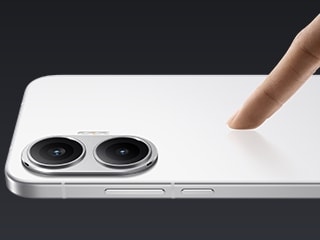- Home
- Laptops
- Laptops News
- Lenovo on track to become top PC maker
Lenovo on track to become top PC maker

The ThinkPad maker's rise highlights the advance of China's technology firms on the world stage in recent years thanks to a combination of aggressive pricing, overseas acquisitions and their taking advantage of a fast-growing home market.
Analysts, however, also warn that Lenovo's rapid gains in market share have come at the expense of profit margins, while the company faces slowing growth in the market for personal computers and tough rivals in the tablet PC space.
"It's just a matter of time before Lenovo becomes No. 1 and it won't be surprising at all if it happens later this year," said Frederick Wong, executive director at Avant Capital Management (Hong Kong) Ltd, which owns shares in Lenovo.
He added, however, that competition in the tablet sector and a weak PC market outlook could put pressure on Lenovo.
Lenovo, which became the world's No. 2 PC vendor in the third quarter of 2011, had a 14.9 percent global market share in the April-June quarter this year, a mere 0.6 percentage point away from HP's 15.5 percent, according to research firm IDC's latest data. Figures from industry tracker Gartner show an even narrower gap, with Lenovo just 0.2 percentage point from HP.
In another technology sector, China's Huawei Technologies Co Ltd, the world's No.2 maker of telecom equipment, had been expected to surpass Sweden's Ericsson in 2011 sales. But slow telecom spending, stiff competition in the handset market and difficulties in tapping the massive U.S. market held it back.
Switching lanes
Lenovo's rise has been helped by its purchase of Germany's Medion and a joint venture with Japan's NEC Corp last year, as well as its acquisition of IBM Corp's PC business in 2005.
Investors have rewarded Lenovo for its market share gains, sending its stock up by around 16 percent this year and outpacing rivals HP, third-ranked Dell Inc and No. 4 Acer Inc, whose stocks have dropped over the same period.
Lenovo currently trades at a multiple of 12.5 times forward earnings, the second-highest among the top-five PC makers and well above the 4.6 times multiple for HP, Thomson Reuters Starmine data showed.
But profit margins have suffered. Lenovo had a 1.4 percent operating margin in the latest quarter, lower than HP's 7.4 percent and Dell's 6.2 percent, the data showed.
"HP, Dell and Acer have switched lanes in the PC race and passed the baton to L enovo in terms of focusing on sales rather than margins," said Dickie Chang, an analyst at IDC in Hong Kong.
Another risk is slowing growth in the PC market as the global economy, including Lenovo's home turf and stronghold China, eases.
China accounts for about 42 percent of Lenovo's total revenue, with the bulk of that coming from PC sales.
Global PC shipment growth was largely flat in the second quarter, marking the seventh straight quarter of low 0 to 5 percent growth for the industry.
"We remain positive on Lenovo's market share expansion, but the absolute growth is nevertheless being negatively impacted by a slower market," Jefferies said in a report. Jefferies has an "underperform" rating on Lenovo with a price target of HK$5.70.
Overall PC demand could pick up this year with the launch of Windows 8, though the catch is that competition in the sector for tablet PCs -- not Lenovo's strongest area -- will heat up because the operating system is designed to run on laptops and tablets.
Mizuho analyst Charles Park forecasts the PC market will grow by just 3 percent this year.
Lenovo's tablets, its LePads, will also face competition from new products, including the next versions of Amazon.com Inc's Kindle Fire and Apple Inc's iPad, as well as Google Inc's Nexus 7 and Microsoft Corp's Surface.
Copyright Thomson Reuters 2012
Catch the latest from the Consumer Electronics Show on Gadgets 360, at our CES 2026 hub.
Related Stories
- Samsung Galaxy Unpacked 2025
- ChatGPT
- Redmi Note 14 Pro+
- iPhone 16
- Apple Vision Pro
- Oneplus 12
- OnePlus Nord CE 3 Lite 5G
- iPhone 13
- Xiaomi 14 Pro
- Oppo Find N3
- Tecno Spark Go (2023)
- Realme V30
- Best Phones Under 25000
- Samsung Galaxy S24 Series
- Cryptocurrency
- iQoo 12
- Samsung Galaxy S24 Ultra
- Giottus
- Samsung Galaxy Z Flip 5
- Apple 'Scary Fast'
- Housefull 5
- GoPro Hero 12 Black Review
- Invincible Season 2
- JioGlass
- HD Ready TV
- Laptop Under 50000
- Smartwatch Under 10000
- Latest Mobile Phones
- Compare Phones
- OPPO Reno 15 Pro Max
- Honor Win RT
- Honor Win
- Xiaomi 17 Ultra Leica Edition
- Xiaomi 17 Ultra
- Huawei Nova 15
- Huawei Nova 15 Pro
- Huawei Nova 15 Ultra
- Asus ProArt P16
- MacBook Pro 14-inch (M5, 2025)
- OPPO Pad Air 5
- Huawei MatePad 11.5 (2026)
- Xiaomi Watch 5
- Huawei Watch 10th Anniversary Edition
- Acerpure Nitro Z Series 100-inch QLED TV
- Samsung 43 Inch LED Ultra HD (4K) Smart TV (UA43UE81AFULXL)
- Asus ROG Ally
- Nintendo Switch Lite
- Haier 1.6 Ton 5 Star Inverter Split AC (HSU19G-MZAID5BN-INV)
- Haier 1.6 Ton 5 Star Inverter Split AC (HSU19G-MZAIM5BN-INV)

















